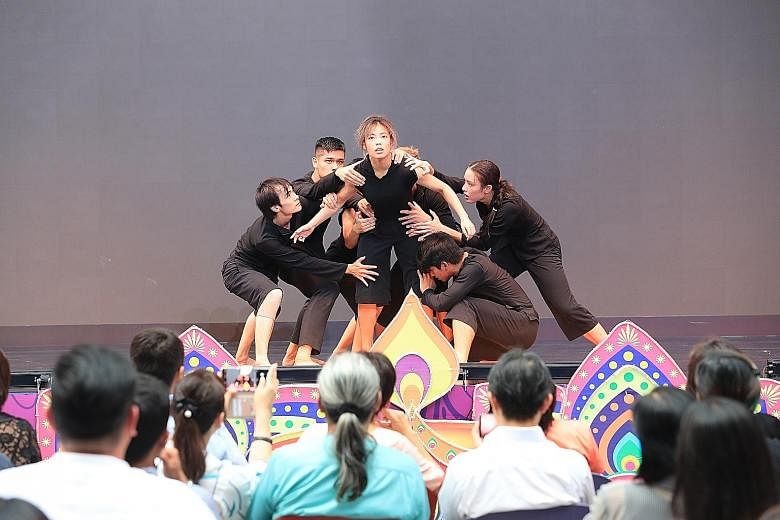Growing audiences for the arts will be a priority for the National Arts Council (NAC), according to a new five-year arts plan launched yesterday by Minister for Culture, Community and Youth Grace Fu at Our Tampines Hub.
The plan, called Our SG Arts Plan, charts new directions for the literary, visual and performing arts in Singapore and lists eight key areas that the NAC will focus on, including increasing support for freelancers, promoting Singapore arts overseas, strengthening research in the arts sector and using technology in art making and outreach.
Through the new five-year plan, the NAC hopes that the arts will energise and excite Singaporeans as well as bring together diverse communities. It also hopes Singapore arts will be appreciated by audiences and critics both at home and overseas.
Ms Fu said that with the emergence of new fault lines between foreigners and locals, the haves and have-nots, and people who hold different values, one of the Ministry of Culture, Community and Youth's tasks is to strengthen Singapore's social fabric.
"We also want to draw on the power of the arts in building a more caring, cohesive and confident Singapore," said Ms Fu.
Our SG Arts Plan follows the three Renaissance City Plans, from 2000, which outlined the strategies to make Singapore a Distinctive Global City for the Arts, followed by the Arts and Culture Strategic Review, launched in 2012, which resulted in an injection of $300 million into the culture sector from 2012 to 2016.
-
EIGHT KEY PRIORITIES
-
• Strengthen the National Arts Council's role in leading and championing the arts in Singapore.
• Grow audiences using research and data analytics.
• Build diverse capabilities in the arts sector, for example, in technical theatre and arts management.
• Increase support for freelancers.
• Use digital technology to improve art-making and outreach efforts.
• Strengthen research in the arts sector.
• Strengthen programme design to maximise impact of the arts on society, while using the arts to bring people together.
• Promote Singapore arts overseas.
Growing audiences is of particular concern as the NAC said ticketed attendance of arts events declined by 12 per cent from 2.06 million in 2012 to 1.81 million in 2016, even as more people seemed to be attending arts events.
According to the Population Survey On The Arts 2017, 54 per cent of Singaporeans attended at least one arts event in the past year, which is up from 40 per cent in 2013. This could mean that Singaporeans are attending free arts events but are unwilling to pay for ticketed ones.
Mrs Rosa Daniel, chief executive of the NAC, said the council "hopes to have deeper engagement with existing audiences and to grow new audiences" and will do so through more targeted strategies.
These strategies include using research and data analytics to understand the preferences and lifestyles of various demographics in Singapore, including students, the elderly and people with disabilities.
Responding to the push to grow audiences, chief executive of the National Gallery Singapore Chong Siak Ching said: "Strengthening audience research and leveraging digital technology will be key in our next chapter of engaging the public and making art a more integral part of their everyday lives."
While the general sentiment of the arts community is that data collection to grow audiences is important, some worry that too much emphasis has been placed on ticketed audiences.
Assistant Professor Hoe Su Fern, from the arts and culture management programme at the Singapore Management University who organised a session for members of the public to respond to the draft plan, said: "Many participants highlighted that not everyone can afford a ticket, and we should not simply equate ticket-paying audiences to a more deeply engaged audience."


